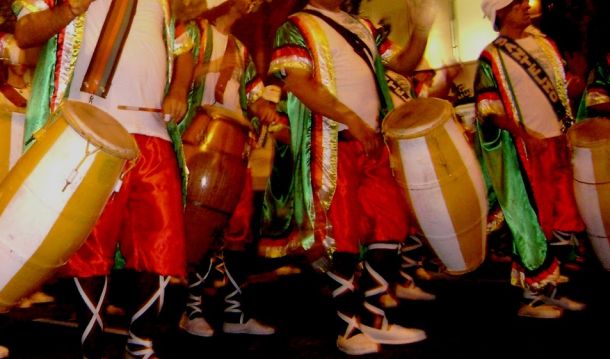The Uruguayan folklore

|
The Uruguayan folklore has different manifestations arising from their different backgrounds that make their own native soil characteristics. On one side are the songs and dances native born and nurtured in the field setting the Vidalita peasant, Milonga, the Payada, the Pericón etc, accompanied by the strumming of the guitar that introduced by Spain during the colonial period and was folklorizó acriolló , being inseparable from the songbook musical instrument Creole and gaucho expressionless. Accordion also inserted into the peasant folk dances which prints a graceful cadence. Moreover ritual dances of African origin brought to the country by the black race in slavery times under Spanish rule, have resulted in a rich Afro-Uruguayan folklore which imposes the famous "Candombe" citizen of the great dance Montevideo immortalized in the paintings of Figari, and that now prevails in the "calls", nourished extras that are armed to rattle of a battery of drums and walking, in the days of carnival South Uruguay Montevideo neighborhood, mixing in parade, under the insistent and obsessive rhythm drummer, Young dancers with typical characters of yesteryear: "bastoneros", "gramilleros", "BRUSH", "moms-old" etc. Show very striking and animation that makes the crowd participants of spectators including thousands of tourists who come to this event that is repeated every year, in full summer season. Popular song is constituted as an expression of collective feeling, standing figure of Alfredo Zitarrosa for his unique and unparalleled voice. Annually, folk festivals are held such as "Mines and April" to recreate the best gaucho traditions. |
